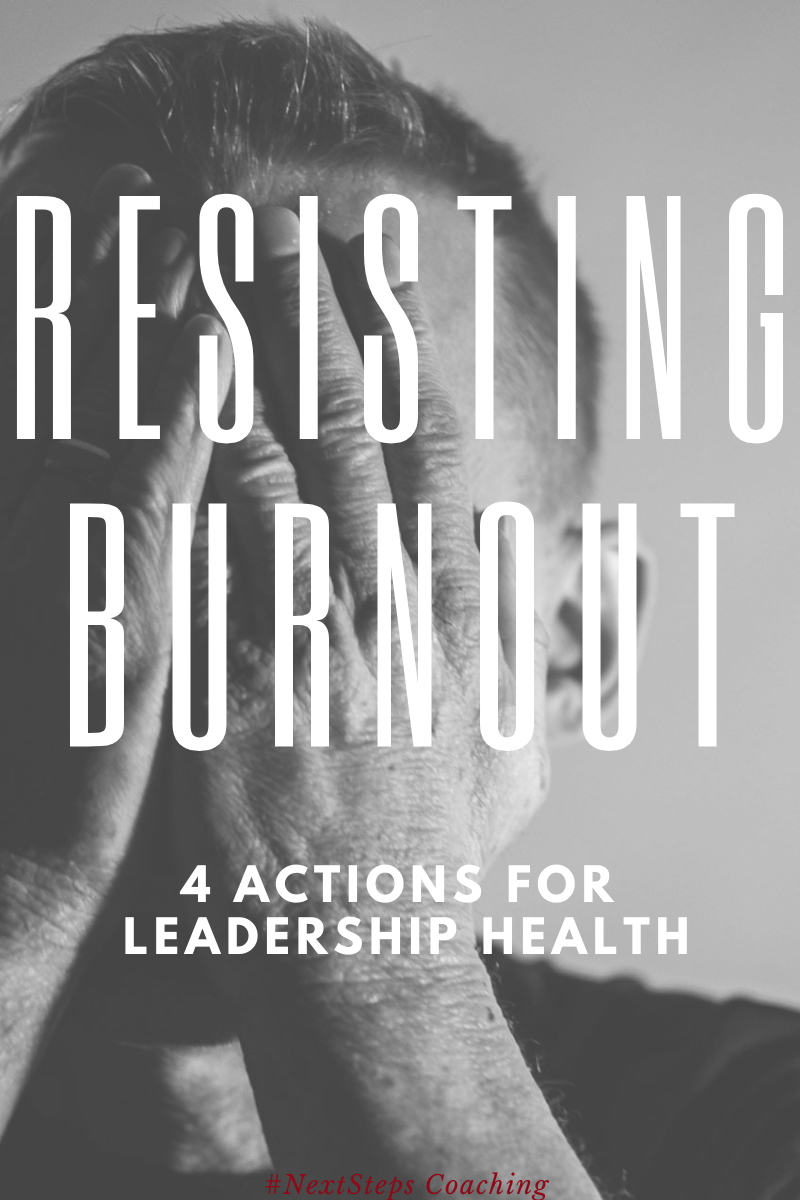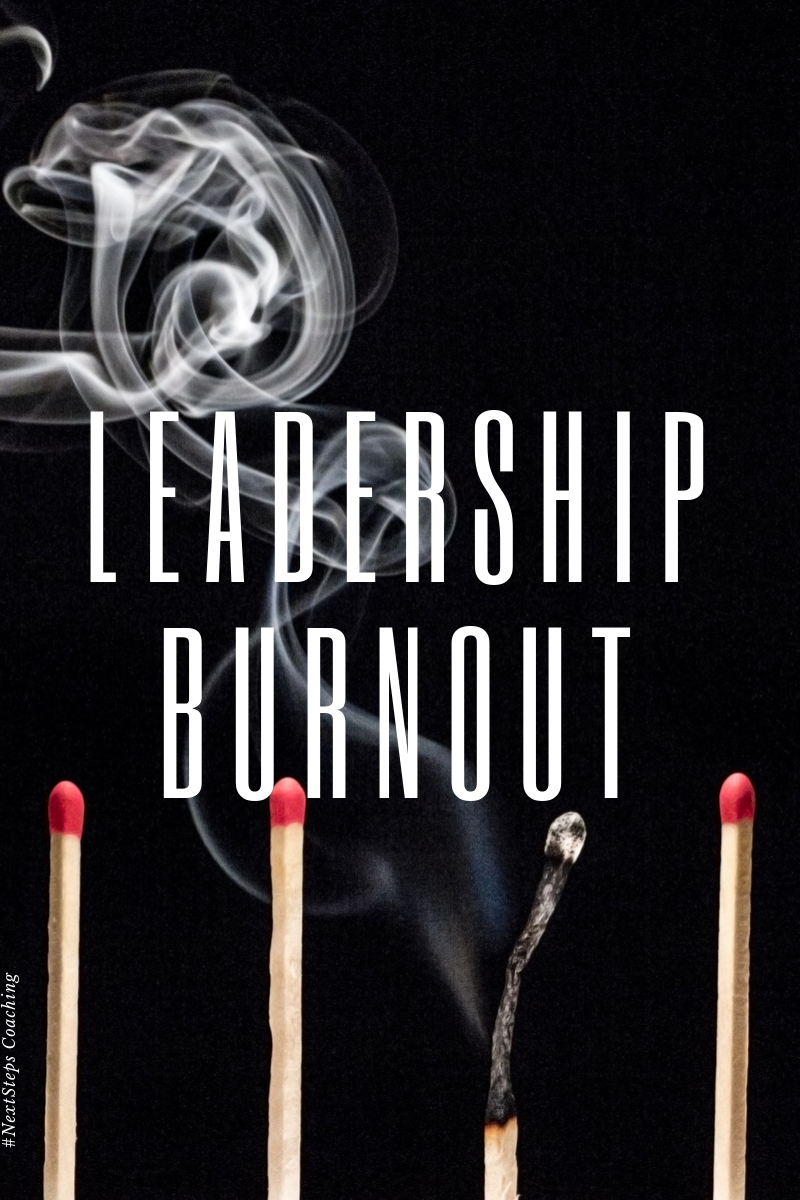
Last week we examined the necessity of talking about burnout.
If we want to prevent leadership burnout, we must first acknowledge it. This week, we want to create a plan for resisting burnout. Below are four things Jesus did. We can implement similar and visions to have sustained leadership success.
Resisting Burnout
Jesus, from the very inception of his public ministry, took intentional action steps to prevent ministry burnout. Aware of the potential dangers and the high price of public demand, Jesus regularly withdrew and practiced steps to healthy spirituality.
Resisting Burnout is a process.
Here are 4 action steps for leadership health.
1.) Clarity in Calling 
Jesus’ first act after his baptism was to withdraw to the wilderness and develop clarity in his calling. Christians claim Jesus as God and therefore temptations he faces in Luke four have often been thought of as “no big deal.” The mindset is that if God can’t sin, these temptations didn’t really bother Jesus. This sells the narrative short. The real temptations behind all of these are what kind of Messiah Jesus is going to be. Behind each of these temptations is a short cut.
Leadership Shortcuts
In the first temptation, he is tempted to transform rocks into bread.
His physical hunger, a legitimate need after forty days in the wilderness, is becoming the focus of the first attack. Clearly there is legitimacy to this need; after forty days of fasting, Jesus needs to eat. The shortcut is to be a one-stop food production worker. Thousands of enslaved Israelites are about to meet him and would love the chance at free food. Satan knows that if Jesus stays busy producing food for the masses, he will never have time or be a threat to conquer death and sin.
We can face similar temptations in our own leadership journey. People will look to us to help them accomplish good things. But good is the enemy of great. Don’t take your eyes off your ultimate calling by settling for something less. Resisting burnout requires clarity of vision.
The second temptation is to worship Satan and be given the status of ruler over the earth.
Satan’s hope here is to usurp God’s authority in the life of Jesus with his own. If Jesus worships Satan, then there is no need for a political-religious showdown with the local rulers. The status quo can be maintained.
Wise leadership knows when to upset the status quo and start a new direction. Courageous leadership takes action when action is required, knowing that the end destination will be worth the temporary pain of change. Resisting burnout requires courageous action.
The final temptation is to jump from the temple and be miraculously saved by angels.
Enthralled masses would soon want to follow this daredevil, Jesus. He would be so busy planning his next death-defying escape that he wouldn’t have time for social and religious transformation. Always needing to please the crowd, Jesus would waste his days performing magic tricks instead of freeing enslaved people.
Called leaders do not settle for being crowd-pleasers. Instead, while they hope to inspire those that follow them, they are more concerned about doing what is right and living in the full depth of their calling. Resisting burnout requires internal strength.
The Danger of Settling
The dangerous grounds for each of these is that Jesus ends up doing all of these tasks any way.
- Jesus does feed the hungry masses in spectacular ways.
- He does perform miracles that draw crowds
- He is crowned and given authority over the earth.
Yet as it relates to burnout prevention we see something important: Jesus does and is able to accomplish these things because he first spent time clarifying his calling and who he was in God. Leaders must use this same sort of diligence.
There will always be the temptation for leaders to fall prey to these temptations in one way or another: the need for validation, the false sense of urgency, or the cheap thrill of mindless entertainment.
Only when someone has been sufficiently grounded in both calling and character are they able to produce lasting and beneficial leadership.
2.) Solitude and Prayer
Another important rhythm that Jesus engages in is to regularly retreat for prayer and solitude. One author records,
“Yet the news about him spread all the more, so that crowds of people came to hear him and to be healed of their sicknesses. But Jesus often withdrew to lonely places and prayed.”
The demands of leadership are tiring to the body and the soul. By instilling regular rhythms of rest and retreat, leaders can fight against fatigue.
Regular intervals might include:
- Daily disciplines like prayer, exercise, and meditation.
- Monthly half-day getaways for extended silence away from technology.
- Quarterly retreats for planning and visioning.
- Yearly vacations and times of Sabbath rest.
3.) Focus On The Right Perspectives
The Gospel of Mark records a telling story about Jesus’ perspectives in ministry. Even in the midst of tremendous need, Jesus tells his disciples that it is time to move on from one location to another. He reminds them that they must travel throughout the countryside and to other towns and villages.
The current population wants Jesus to localized and claim him as their own. Jesus refutes this desire and offers a larger perspective about the work he is up to.
Leaders today will face similar temptations. Getting stuck into work ruts, ignoring vision for the day-to-day mundane, the desire to be liked, or the inability to say no. Called and courageous leaders must resist all of these temptations.
4.) Personal Relationships
Two key markers are important to note in an examination of Jesus’ personal relationships.
First, there is the frustration of isolation. The elevation of the leader in the mind of the organization often leaves them with few (if any) close friends or trusted confidants. All relationships essentially become working relationships and lack a personal feel. Jesus builds a personal ministry with close confidants, not only seeking to train the disciples but to confide in them and relate to them as people. Jesus, in eating with his followers and in visiting their homes, shows that while he is here to accomplish a mission, people are the focus and deserve his best.
Second is Jesus’ investment in others. Jesus spent significant time investing in other people: his twelve disciples, a larger group of seventy-two followers, and the masses. Within each of these spheres, he invests in the well-being of others through mentoring, training and education.
What is often lost in the hectic pace of leadership is a commitment to invest, mentor, and train others. When tasks become more important than people and result more important than a process, leaders lose the opportunity for influence. To break free from this misaligned perspective, leaders must regain focus on investing time with people and bring them into further stages of development.

